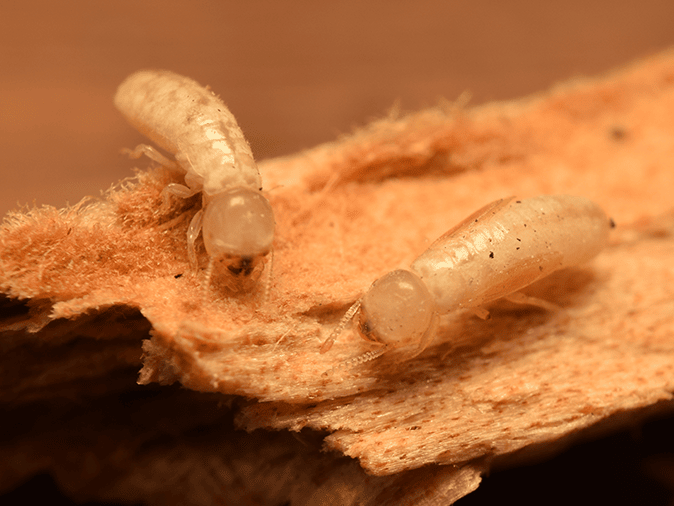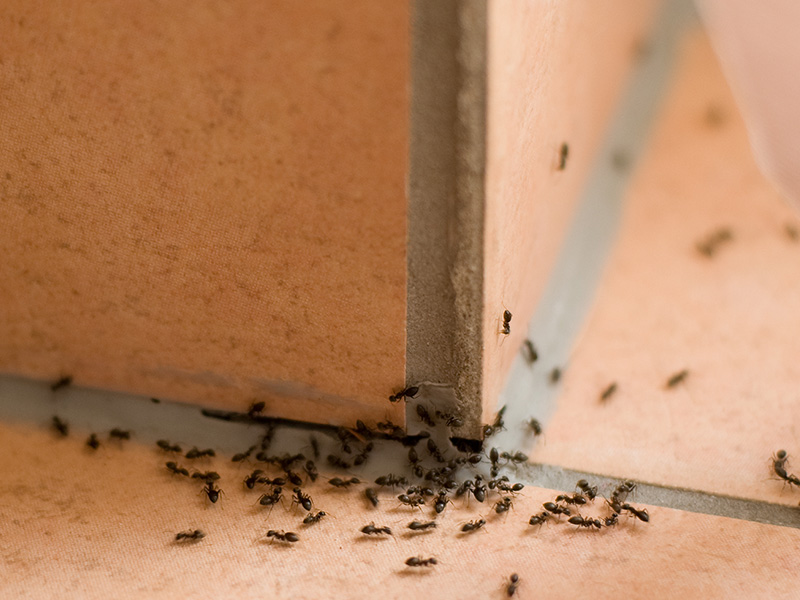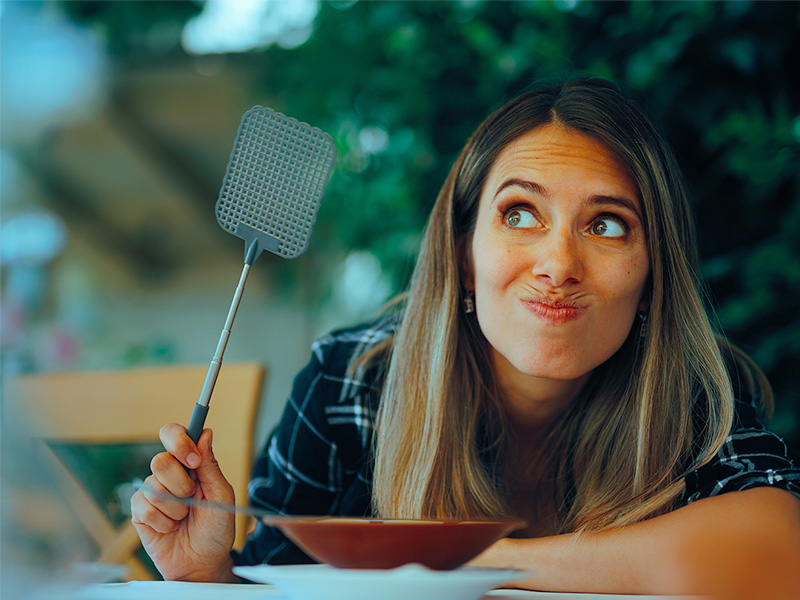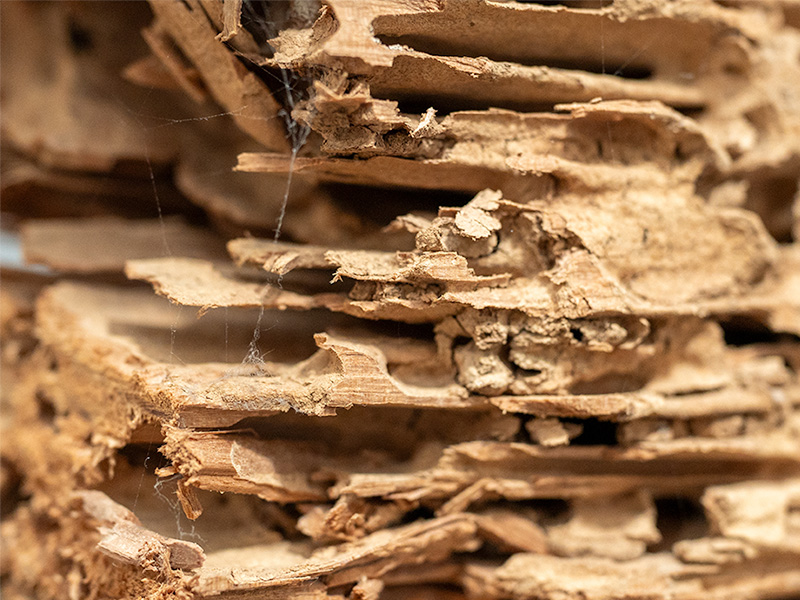
What do drywood termites look like?
Drywood termites are a social insect having caste members including reproductives, soldiers, and nymphs. Each caste has different physical features. Reproductive alates are 1/2 inch long, dark brown to yellow, and have smoky gray wings. Soldiers are brownish, 1/2 inch long, have large developed heads and strong mandibles. Nymphs are white to grayish and 1/2 inch long.
When are drywood termites most active?
Life cycle of drywood termites
Incomplete metamorphosis
Winged females and males (alates) emerge from wood initiating the reproductive process through swarming. Female and male reproductives will lose their wings, pair up, and find a crevice in wood to mate. The queen lays and cares for the eggs during the two-week period it takes for them to hatch. Nymphs emerge and take on the role of a worker. They forage for food and feed the colony. Nymphs will molt and eventually develop into either a soldier or reproductive caste depending on the need of the colony. It takes up to 2 years to molt 5 times. Soldiers use their large mandibles to help protect the colony. Reproductives help the queen care and reproduce eggs. The growth of drywood colonies is slower than subterranean termite colonies.
Habits of drywood termites
- Diet: Wood. Nymphs eat with and across the grain of wood leaving a smooth gallery.
- Activity: Continually active. Swarm usually late summer or early fall in Arizona.
- Preferred Climate: 80-90 degrees and relative humidity
- Defense: Soldiers protect the colony from invaders with their mandibles.
- Cautions: Damage to structures can be extremely costly and should be treated immediately.
- Sign of Infestation: Fecal pellets and wood shavings. Small openings found in a structure or furniture above the debris. Mass wings on a surface.
- Home Invasion: Enter homes through cracks and crevices, window openings during the swarming process or furniture brought into the home is already infested. Multiple infestations can occur within one structure.
Are drywood termites dangerous?
Drywood termite populations can cause severe damage to homes and businesses.
Essentially termites will bite wood and attack other insects but not people and are not considered a threat to human health.
Where do drywood termites nest?
Unlike subterranean termites that nest in the ground, drywood termites prefer to nest under wooden roof shingles, eaves, and other dry, above-ground wood sources.
Helpful hints for drywood termites
To protect your structure from drywood termites, we strongly recommend an inspection and an ongoing termite control plan.
An interesting fact about drywood termites
While subterranean termites need moisture to survive, drywood termites infest dry, sound wood with as little as 3% moisture content.
How do you get rid of drywood termites?
Northwest Exterminating offers effective termite treatments in Phoenix, Tucson, and Southern Arizona that stop these wood-destroying insects from taking over. Contact us today to find out how we can help you protect your home from termites.

Testimonials
Request Your FREE Estimate
Have questions or need help getting rid of drywood termites or other pests? Simply complete the form below or give us a call!



